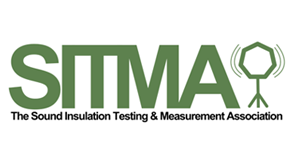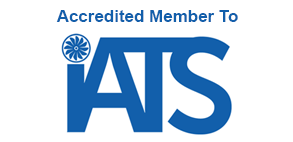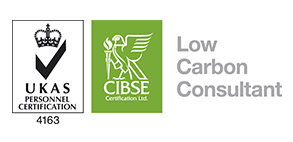Offices Nationwide

Sound Transmissions
Sound transmission paths can be interrupted by sound insulation and by blocking air paths. The sound insulation of a single leaf of a material is governed by its mass, stiffening and damping.
The sound insulation across a good conventional, lightweight, office to office construction is typically in the order of 45 dB Dw. This means that if the sound level in the source room is around 65 dB, (a typical level for speech) the sound level in the adjacent room, the receiver room, will be approximately 20 dB (barely audible). If sound levels are increased in the source room however, to 75 dB (raised voice), sound levels within the adjacent room will also increase to around 30 dB (audible). Sound insulation therefore describes the level of sound lost across a partition and not the level of sound within an adjacent room.
Dw represents the sound insulation between rooms on-site. Rw represents the lab tested sound insulation of an element making up a partition wall/floor type. Standards achieved in labs may not be possible on site because of the quality of workmanship and due to sound ‘flanking’ acoustic elements, that is, travelling around them through an easier path, rather than only directly through them as under lab conditions.
The building regulations part E sets minimum standards for design and construction in relation to the resistance to the passage of sound.



Point of Reference
Points of Reference *measured in dBA or decibels:
- 0 The softest sound a person can hear with normal hearing
- 10 normal breathing
- 20 whispering at 5 feet
- 30 soft whisper
- 50 rainfall
- 60 normal conversation
- 110 shouting in ear
- 120 thunder



The Decibel Scale
The decibel scale gives an approximation of human perception of relative loudness. This is because the human ear has a logarithmic response to changes in sound level.
On the decibel scale, the smallest audible sound (near total silence) is 0 dB. A sound ten times more powerful is 10 dB. A sound 100 times more powerful than near silence is 20 dB.
The logarithmic nature of the dB scale means that each 10 dB increase represents a 10-fold increase in acoustic power. A 20 dB increase is therefore a 100-fold increase in power, and a 30 dB increase is a 1000-fold increase. However, an increase in acoustic power of ten times does not mean that the sound is perceived as being ten times louder. The ear perceives a 10 dB increase in sound level as only a doubling of sound loudness, and a 10 dB decrease in sound level as a halving of sound loudness.
The lower threshold of human hearing is around 5 dB. Normally speaking voices are around 65 dB. A rock concert can be around 120 dB.
Sounds that are 85 dB or above can cause hearing damage, and the higher the sound pressure, the less time it takes to cause damage. For example, a sound of 85 dB may take 8 hours to cause damage, whereas a sound of 100 dB may start to cause damage after only 30 minutes. A sound of around 150 dB can cause instantaneous hearing damage.



Noise Disturbance
Building acoustics can help to mitigate the effects of noise disturbance which can have negative effects on health, well-being and general quality of life.
The Noise Policy Statement for England (NPSE) defines noise pollution as:
- Environmental noise: which includes noise from transportation sources. - Neighbour noise: which includes noise from inside and outside buildings. - Neighbourhood noise: which includes noise arising from industrial and entertainment premises, trade and businesses, construction sites and noise in the street.
This can be an important consideration for the location, design and construction of new developments.


Copyright 2025 E2 Specialist Consultants Limited
Company No. 06728970

































